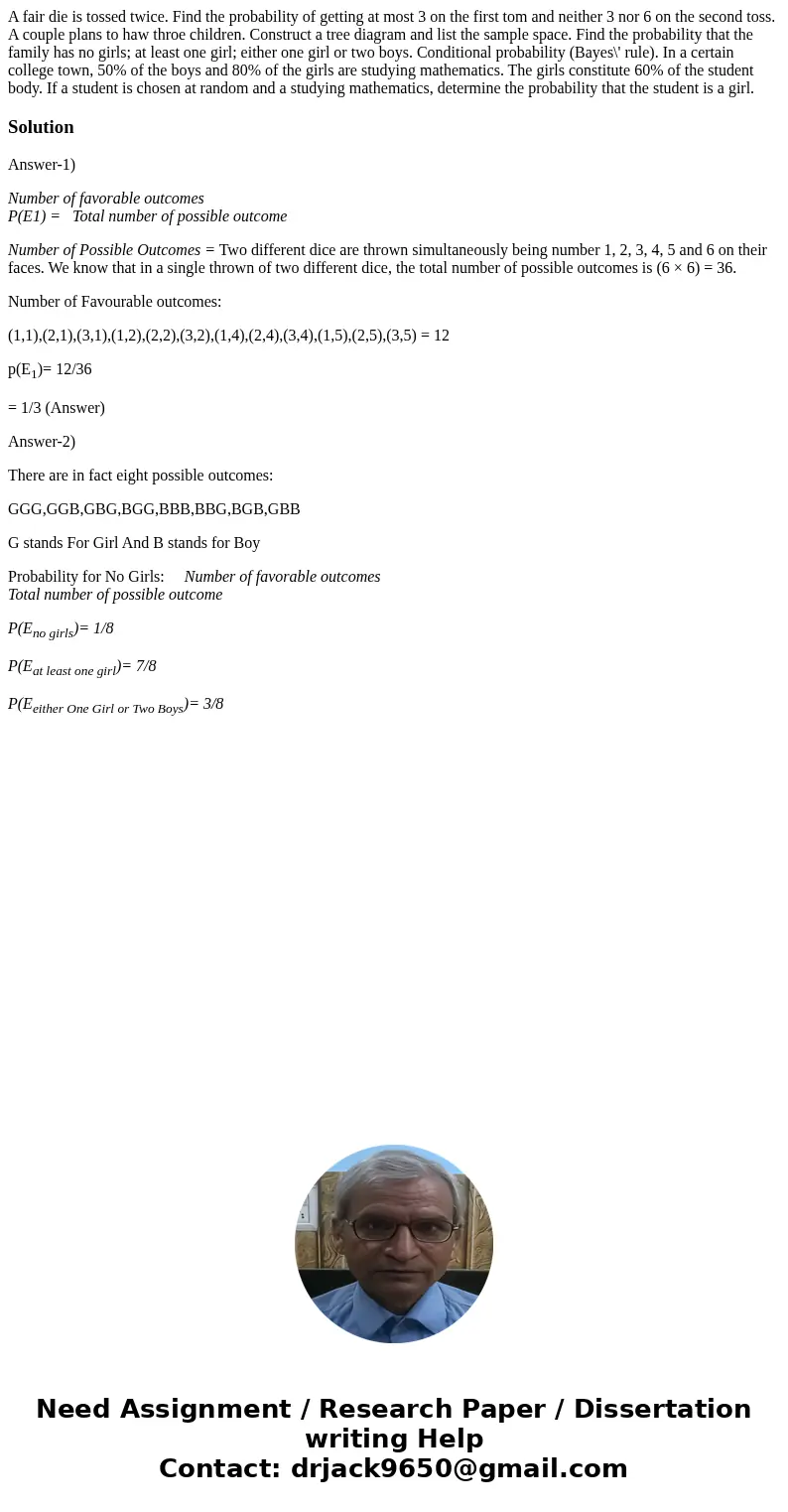A fair die is tossed twice Find the probability of getting a
A fair die is tossed twice. Find the probability of getting at most 3 on the first tom and neither 3 nor 6 on the second toss. A couple plans to haw throe children. Construct a tree diagram and list the sample space. Find the probability that the family has no girls; at least one girl; either one girl or two boys. Conditional probability (Bayes\' rule). In a certain college town, 50% of the boys and 80% of the girls are studying mathematics. The girls constitute 60% of the student body. If a student is chosen at random and a studying mathematics, determine the probability that the student is a girl.
Solution
Answer-1)
Number of favorable outcomes
P(E1) = Total number of possible outcome
Number of Possible Outcomes = Two different dice are thrown simultaneously being number 1, 2, 3, 4, 5 and 6 on their faces. We know that in a single thrown of two different dice, the total number of possible outcomes is (6 × 6) = 36.
Number of Favourable outcomes:
(1,1),(2,1),(3,1),(1,2),(2,2),(3,2),(1,4),(2,4),(3,4),(1,5),(2,5),(3,5) = 12
p(E1)= 12/36
= 1/3 (Answer)
Answer-2)
There are in fact eight possible outcomes:
GGG,GGB,GBG,BGG,BBB,BBG,BGB,GBB
G stands For Girl And B stands for Boy
Probability for No Girls: Number of favorable outcomes
Total number of possible outcome
P(Eno girls)= 1/8
P(Eat least one girl)= 7/8
P(Eeither One Girl or Two Boys)= 3/8

 Homework Sourse
Homework Sourse